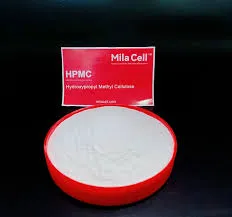
Dec . 07, 2024 02:58 Back to list
hpmc safety
Understanding HPMC Safety Implications and Best Practices
Hydroxypropyl methylcellulose (HPMC) is a cellulose derivative widely used in various industries, including pharmaceuticals, food, cosmetics, and construction. Its versatility, non-toxic nature, and ability to form gels make HPMC a popular choice for many formulations. However, with increased usage, concerns regarding safety and potential health implications also arise. This article will explore HPMC safety, its applications, potential risks, and best practices for handling.
What is HPMC?
HPMC is obtained from cellulose, which is a natural polymer. It is a white, odorless, and tasteless powder that dissolves in cold water to form a viscous solution. This property makes it valuable for use as a thickener, binder, and emulsifying agent. It is commonly found in pharmaceutical formulations, where it acts as a controlled-release agent, improving the bioavailability of active ingredients. Additionally, HPMC is frequently used in food products as a stabilizer and in cosmetic formulations for its thickening and film-forming properties.
Safety Profile of HPMC
HPMC is generally regarded as safe (GRAS) by regulatory authorities, including the U.S. Food and Drug Administration (FDA). Extensive studies have shown that HPMC does not pose significant health risks when used according to established guidelines. It is not absorbed by the gastrointestinal tract, which means it passes through the body without being metabolized.
Despite its safety profile, it is crucial to consider the potential for allergic reactions or sensitivities in certain individuals, although such cases are rare. The purity of HPMC is also essential; impurities can pose health risks, particularly if the material is of low quality or sourced improperly.
Potential Risks and Concerns
While HPMC is considered safe for consumption and application, concerns arise mainly from its manufacturing process and product quality. Low-quality HPMC may contain contaminants that could lead to adverse reactions. Inhalation of HPMC dust during handling can also pose respiratory risks, particularly in occupational settings. Therefore, personal protective equipment (PPE), such as masks and gloves, should be utilized to minimize exposure.
Another area of concern is the environmental impact of HPMC, especially in large-scale production. The sustainability of sourcing raw materials and the waste generated during production and application processes require careful management to mitigate potential environmental harm.
hpmc safety

Best Practices for Safe Handling
To ensure the safe use of HPMC in various applications, adherence to best practices is highly recommended
1. Quality Control Always source HPMC from reputable suppliers who provide high-quality materials. Conduct thorough quality checks to ensure the absence of contaminants.
2. Proper Storage Store HPMC in a cool, dry place, away from direct sunlight. Proper storage conditions minimize degradation and ensure the integrity of the material.
3. Personal Protective Equipment When handling HPMC powder, especially in industrial settings, wearing appropriate PPE—such as masks, gloves, and goggles—can significantly reduce the risk of exposure and respiratory issues.
4. Training and Education Workers involved in the handling and processing of HPMC should receive proper training on safety protocols, potential hazards, and emergency procedures.
5. Environmental Considerations Implement practices that reduce waste and environmental impact during HPMC production and use. Consider using biodegradable materials where possible.
6. Monitoring Health In occupational settings, regular health monitoring of workers handling HPMC can help identify any potential health issues early, ensuring prompt action is taken.
Conclusion
HPMC is a widely used and generally safe material in various applications, but it is essential to observe safety measures and best practices to minimize potential risks. As industries continue to evolve, ongoing research and commitment to safety will help ensure that HPMC remains a reliable and safe choice for consumers and manufacturers alike. By prioritizing quality, proper handling techniques, and awareness of environmental impacts, we can harness the benefits of HPMC while safeguarding public health and the environment.
-
Versatile Hpmc Uses in Different Industries
NewsJun.19,2025
-
Redispersible Powder's Role in Enhancing Durability of Construction Products
NewsJun.19,2025
-
Hydroxyethyl Cellulose Applications Driving Green Industrial Processes
NewsJun.19,2025
-
Exploring Different Redispersible Polymer Powder
NewsJun.19,2025
-
Choosing the Right Mortar Bonding Agent
NewsJun.19,2025
-
Applications and Significance of China Hpmc in Modern Industries
NewsJun.19,2025







